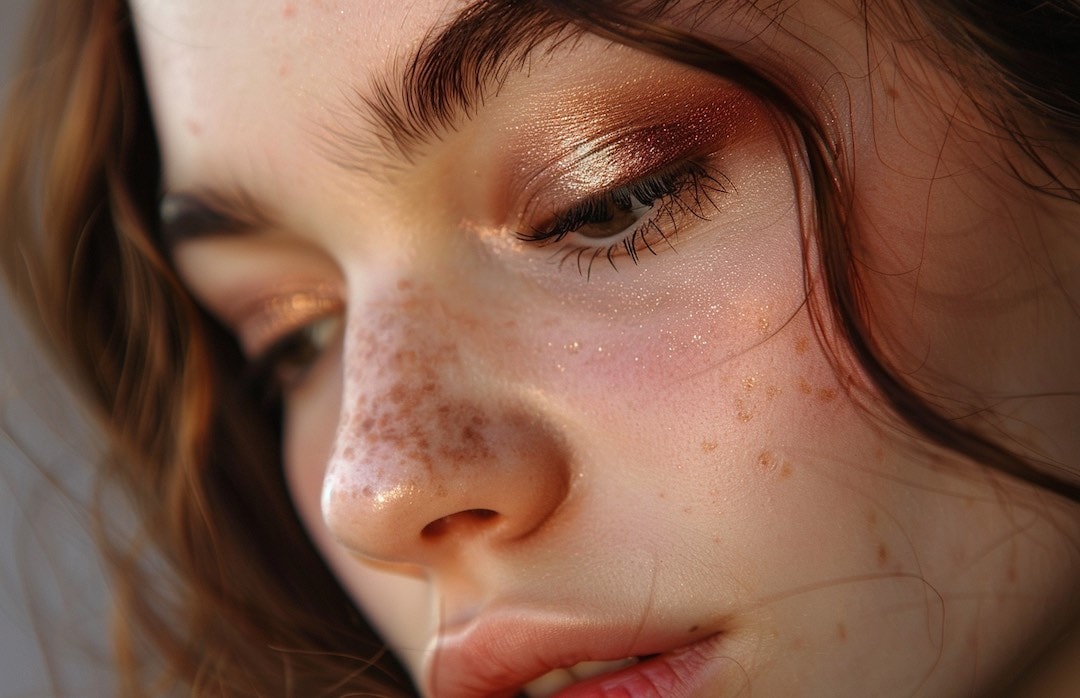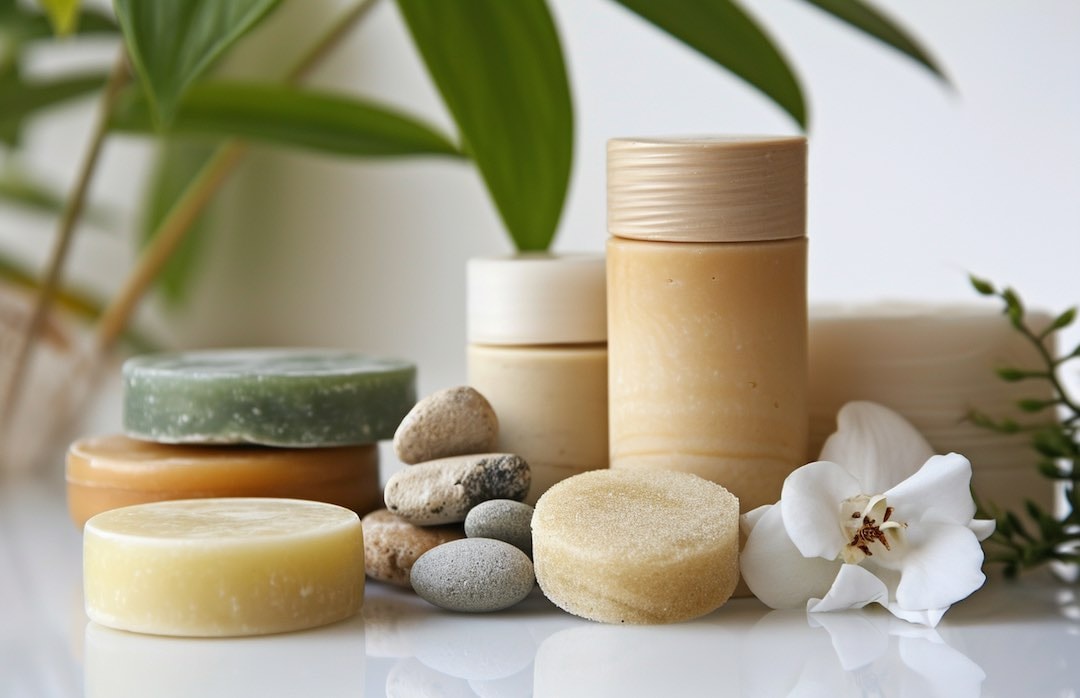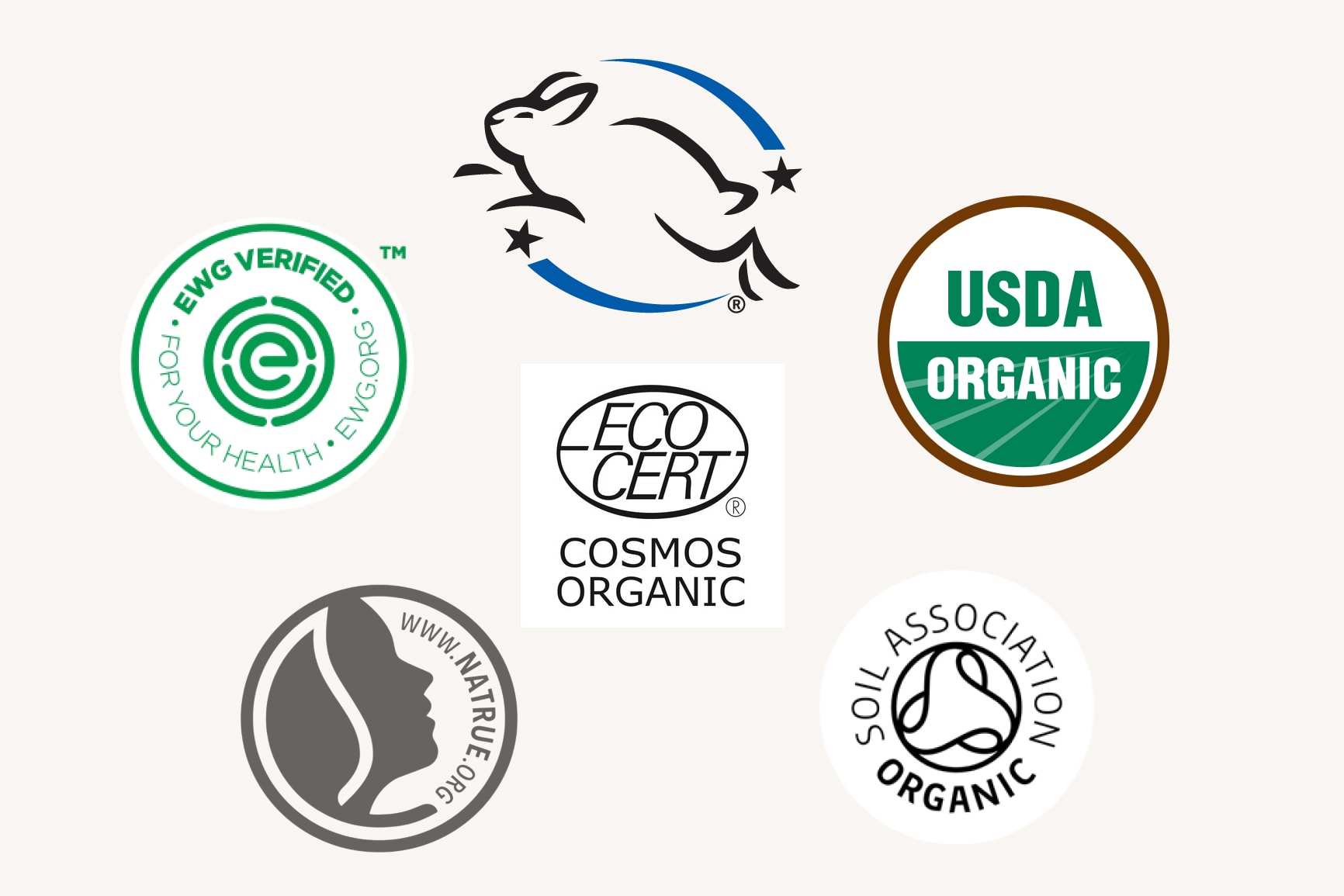Table of Contents
Ultimativer Guide für Clean Beauty: Ein tiefgehender Blick in den wachsenden Trend
This page may contain affiliate links. We may earn a commission on purchases, at no additional cost to you. Learn more →
Wenn du wie ich darauf achtest, was du jeden Morgen auf dein Gesicht gibst, bist du wahrscheinlich schon auf die "Clean Beauty"-Bewegung gestoßen. Dieser Trend entstand als Reaktion auf die fehlende Regulierung in der Beauty-Industrie und hat eine hitzige Debatte über seine Definition und das Risiko des Greenwashings entfacht.
Aber was bedeutet "Clean Beauty" genau? Und warum sollte es dich interessieren?
Du magst Clean Beauty mit organischen Produkten, natürlichen Inhaltsstoffen und nachhaltigen Lösungen in Verbindung bringen. Obwohl diese Assoziationen nicht falsch sind, ist der Begriff "Clean Beauty" nicht eindeutig reguliert, was zu verschiedenen Interpretationen führt.
Die Bewegung hat in den letzten Jahren deutlich an Fahrt aufgenommen. Laut einer Umfrage von Harper's BAZAARverwenden mittlerweile fast 50% der befragten Frauen Clean Beauty Produkte.
Clean Beauty kann ein starker Verbündeter sein, wenn es darum geht, eine bessere und transparentere Hautpflege zu erreichen – vorausgesetzt, wir wissen, wie wir sie richtig interpretieren. Lass uns Clean Beauty entschlüsseln, um eigenständige und bewusste Entscheidungen über die Produkte zu treffen, die wir täglich verwenden.

Die wichtigsten Fakten
Hole dir die echten Fakten: Versteh endlich, was "Clean Beauty" bedeutet, damit du kluge und informierte Entscheidungen über die Produkte treffen kannst, die du jeden Tag verwendest.
Lieb deine Haut: Sag tschüss zu Reizungen und Allergien mit Produkten, die schädliche Inhaltsstoffe wie Parabene, Sulfate und synthetische Duftstoffe meiden. Deine Haut wird es dir danken!
Fühl dich gut bei deinen Entscheidungen: Unterstütze Marken, die sich um mehr als nur um Gewinne kümmern. Such nach solchen, die tierversuchsfreie Tests und fair gehandelte Beschaffung priorisieren – denn Schönheit sollte durch und durch schön sein.
Sei ein Planetenschützer: Hilf der Erde mit Produkten, die in umweltfreundlicher Verpackung kommen und nachhaltige Inhaltsstoffe verwenden. Kleine Veränderungen können große Auswirkungen haben!
Forder Ehrlichkeit ein: Genieße das beruhigende Gefühl, genau zu wissen, was in deinen Produkten enthalten ist. Clean Beauty Marken setzen auf Transparenz, sodass du nie im Dunkeln stehst.
Was versteht man unter clean Beauty?
Clean Beauty ist ein Trend in der Kosmetikindustrie, der Sicherheit, Nachhaltigkeit, Ethik und Transparenz in den Vordergrund stellt. Obwohl es keine einheitliche Definition gibt, umfasst das Konzept folgende Hauptaspekte:
Schadstofffreie Inhaltsstoffe: Verzicht auf potenziell schädliche Substanzen wie Parabene, Sulfate oder synthetische Duftstoffe.
Umweltfreundliche Verpackungen: Verwendung von recycelbaren oder biologisch abbaubaren Materialien.
Ethische Produktion: Faire Handelspraktiken und Verzicht auf Tierversuche.
Transparenz: Vollständige Offenlegung der Inhaltsstoffe und deren Zweck.
Clean Cosmetics sollten „frei von schädlichen Inhaltsstoffen“ sein, wie Parabenen, Sulfaten und synthetischen Duftstoffen. Das bedeutet jedoch nicht, dass sie ausschließlich aus 100% natürlichen Inhaltsstoffen bestehen.
Die Definition schädlicher Chemikalien variiert je nach Region aufgrund unterschiedlicher Vorschriften. Beispielsweise hat die Europäische Union über 2.500 Inhaltsstoffe in Körperpflegeprodukten verboten, während die US-amerikanische FDA nur 11 Chemikalien auf ihrer Liste hat.
Der Begriff „Clean Beauty“ ist nicht so neu, wie du vielleicht denkst. Er tauchte erstmals in den 1970er Jahren auf, dank Cover Girl und ihrer „Clean Make-up“-Kampagne, die den frischen, ungeschminkten Look propagierte. In den frühen 2000er Jahren griffen Marken wie Ren, deren Name im Schwedischen buchstäblich „sauber“ bedeutet, dieses Konzept auf und entwickelten es weiter.
Die Bewegung gewann an Popularität aufgrund von Frustration über die regulatorische Aufsicht von Körperpflegeprodukten. Erst in den 2020er Jahren erlebte sie einen richtigen Boom, wobei viele Unternehmen den trendigen Slogan nutzten, um ihre Produkte zu beschreiben.
Echte Clean Beauty bedeutet einen ganzheitlichen Ansatz, der nicht nur die Produktformeln, sondern auch die Produktion, Verpackung und Vermarktung berücksichtigt. Dies sollte zur Transparenz der Marken beitragen und das Vertrauen der Kunden stärken, indem potenziell schädliche Inhaltsstoffe eliminiert werden und gleichzeitig das Wohlbefinden des Planeten berücksichtigt wird.

Wichtige Vorteile von Clean Beauty produkten
Clean Beauty bietet mehrere potenzielle Vorteile, die den Bedürfnissen der Verbraucher nach sichereren, ethischeren und umweltfreundlicheren Produkten entsprechen:
Sicherer für deine Haut: Clean-Produkte verzichten oft auf potenziell schädliche Inhaltsstoffe wie Parabene, Sulfate und synthetische Duftstoffe, wodurch das Risiko von Hautirritationen und Allergien reduziert wird. Erfahre mehr über Inhaltsstoffe, die du vermeiden solltest.
Besser für die Umwelt: Viele Clean Beauty Marken setzen auf nachhaltige Verpackungen und ethisch gewonnene Inhaltsstoffe, was dazu beiträgt, die Umweltbelastung zu verringern.
Erhöhte Transparenz: Clean Beauty Unternehmen sind oft offener in Bezug auf ihre Inhaltsstoffe und Herstellungsprozesse, sodass Verbraucher mehr Informationen für fundierte Entscheidungen erhalten.
Potentiell schonender für empfindliche Haut: Natürliche, ungiftige Inhaltsstoffe verursachen weniger wahrscheinlich Irritationen oder allergische Reaktionen und sind daher für empfindliche Haut geeignet.
Ethik und Verantwortung: Viele Clean Beauty Marken legen Wert auf tierversuchsfreie Tests und fair gehandelten Bezug, um sicherzustellen, dass ihre Produkte ethisch produziert werden.
Warum ist der Clean Beauty Trend so beliebt?
Clean Beauty hat sich in den letzten Jahren erheblich ausgeweitet. Es wird prognostiziert, dass dieser Trend in den nächsten zehn Jahren einen höheren Marktanteil in der Schönheitsindustrie gewinnen und seinen Wert bis 2033 vervierfachen könnte.
Was treibt die Clean Beauty Bewegung an? Während der Fokus verstärkt auf sauberen Inhaltsstoffen und "frei-von"-Produkten liegt, sehen wir eine Veränderung im Bewusstsein der Verbraucher. Es handelt sich um mehr als nur einen Hype. Die Menschen werden zunehmend klima- und gesundheitsbewusster, und dies spiegelt sich in ihren Einkaufsentscheidungen wider. Unternehmen, die nachhaltige Verpackungen, tierversuchsfreie Tests und vegan zertifizierte Produkte anbieten, werden immer mehr geschätzt.
Diese Veränderung geschah nicht über Nacht. Soziale Medien, Klimaaktivisten und Dokumentarserien wie "Not So Pretty" haben eine bedeutende Rolle gespielt, indem sie die schädlichen Auswirkungen von Schönheits- und Körperpflegeprodukten aufgezeigt haben.
Organisationen wie das Umweltbundesamt (UBA), der Bund für Umwelt und Naturschutz Deutschland (BUND) und der Deutsche Naturschutzring (DNR) setzen sich unermüdlich dafür ein, Verbraucher über bedenkliche Inhaltsstoffe in Kosmetik- und Körperpflegeprodukten aufzuklären. Diese Verbände arbeiten eng mit europäischen Partnern wie dem European Environmental Bureau (EEB) zusammen, um nützliche Informationen zu teilen und potenziell schädliche Substanzen in Beauty-Produkten zu identifizieren.
Auch das Bundesinstitut für Risikobewertung (BfR) spielt eine wichtige Rolle bei der Bewertung von Inhaltsstoffen und der Aufklärung der Öffentlichkeit. Gemeinsam tragen diese Institutionen dazu bei, dass deutsche Verbraucher fundierte Entscheidungen über ihre Körperpflege- und Kosmetikprodukte treffen können.
Diese Bemühungen haben die Branche dazu gebracht, Produkte zu entwickeln, die besser für deine Gesundheit, deine Haut und den Planeten sind, was deine Wahl im Geschäft einfacher macht.

Warum solltest du auf Clean Beauty umsteigen?
Potenziell schädliche Inhaltsstoffe verstehen
Den Clean Beauty Trend zu übernehmen, bietet zahlreiche Vorteile für unsere Gesundheit und die Umwelt. Wenn du nach Produkten mit weniger Chemikalien und Konservierungsstoffen suchst, könnte Clean Beauty die richtige Wahl für dich sein. Es bietet höhere Qualität und mehr Transparenz von Herstellern und Händlern.
Du könntest durch die Umweltvorteile, ethischen und gesundheitlichen Aspekte, die das Kernstück der Clean Beauty Philosophie sind, angezogen werden. Hier sind einige Gründe, warum du den Wechsel in Betracht ziehen solltest:
Schädliche Inhaltsstoffe vermeiden: Inhaltsstoffe, die in Clean Beauty Kosmetik häufig vermieden werden, wie MI/MCI, Duftstoffmischungen und Formaldehyd, haben sich als gesundheitsschädlich erwiesen und können Hautreizungen, Allergien, chronische Ausschläge oder sogar Krebs verursachen.
Von pflanzlichen Produkten profitieren: Pflanzliche Produkte, die oft in der Clean Beauty zu finden sind, haben eine lange Tradition in der traditionellen Medizin und bieten dermatologische Vorteile.
Risiken durch Duftstoffe vermeiden: Duftstoffhersteller verwenden geheime Formeln, die von der FDA nicht auf den Etiketten aufgeführt werden müssen. Der Verzicht auf duftstoffhaltige Produkte kann dich vor unangenehmen Folgen bewahren.
Bessere Inhaltsstoffe: Clean Beauty Marken neigen dazu, bessere, ungiftige Inhaltsstoffe zu verwenden und fördern Transparenz, damit Käufer fundierte Entscheidungen treffen können.
Clean Beauty vs. Natürlich vs. Bio Beauty
Die Vielzahl an Begriffen in den aktuellen Beauty-Trends kann verwirrend sein. Clean Beauty, Organic Beauty und Natural Beauty werden oft synonym verwendet, aber sie beziehen sich auf unterschiedliche Tendenzen in der Branche.
Bist du verwirrt? Lass uns das klarstellen.
Clean Beauty Produkte: Konzentriert sich auf Sicherheit und Ungiftigkeit und schließt synthetische Inhaltsstoffe ein, wenn diese als sicher gelten. Clean Beauty legt Wert auf die Eliminierung schädlicher Substanzen und Transparenz bei der Angabe der Inhaltsstoffe. Du solltest inzwischen wissen, dass die Definition von "clean" von Marke zu Marke variieren kann, aber der Fokus bleibt auf Sicherheit und Ungiftigkeit statt auf der Herkunft.
Natürliche Beauty Produkte: Verwendet Inhaltsstoffe, die aus der Natur stammen. Natürliche Inhaltsstoffe sind jedoch nicht unbedingt sicherer oder wirksamer und können Allergene und Reizstoffe enthalten. Außerdem bedeutet "natürlich" nicht automatisch "bio" oder "vegan" – Naturkosmetik kann tierische Derivate enthalten.
Bio Beauty Produkte: Enthält Inhaltsstoffe, die ohne synthetische Pestizide oder Düngemittel angebaut wurden und von Organisationen wie BDIH, NATRUE oder COSMOS zertifiziert sind. Um als biologisch zu gelten, müssen Produkte mindestens 95 % biologisch angebaute und verarbeitete Inhaltsstoffe enthalten. Organic Beauty ist am stärksten reguliert und stellt sicher, dass die Produkte spezifische Bio-Standards erfüllen.
Der Mangel an Vorschriften sowohl bei Natural als auch bei Clean Beauty bedeutet, dass du wachsam bleiben und überprüfen musst, ob die Beschreibungen der Marken zu ihren Kosmetika korrekt sind.
Wie nachhaltig ist Clean Beauty?
Die Schönheitsindustrie wurde oft für ihren starken Einsatz von Einwegplastik und Umweltverschmutzung kritisiert. Aber die Zeiten ändern sich! Da wir Verbraucher immer klüger und umweltbewusster werden, bemühen sich die Marken, unsere Anforderungen zu erfüllen.
Heutige Clean Beauty geht über sichere Inhaltsstoffe hinaus – es geht auch um Nachhaltigkeit. Das bedeutet, umweltfreundliche Verpackungen zu verwenden und sicherzustellen, dass die Produkte ihren grünen Versprechen gerecht werden.
Natürliche Inhaltsstoffe klingen zwar großartig, sind aber nicht immer besser für deine Haut oder den Planeten. Was wirklich zählt, ist, wie diese Inhaltsstoffe gewonnen werden. Werden sie ethisch geerntet? Schützen sie die Biodiversität? Ist ihre Produktion energieeffizient?
Achte auf Zertifizierungen wie
BDIH: Kontrollierte Naturkosmetik
NATRUE: Echte Naturkosmetik
Ecocert: Europäisches Bio-Siegel
COSMOS: Europäischer Standard für Bio- und Naturkosmetik
Diese Gütesiegel stellen sicher, dass deine Hautpflegeroutine sowohl für den Planeten als auch für dein Gesicht schonend ist. Also, denke beim nächsten Einkauf daran: Nachhaltigkeit ist das neue Schönheitsideal!
Um als "bio" gekennzeichnet zu werden, müssen Produkte in der Regel mindestens 95% Inhaltsstoffe aus kontrolliert biologischem Anbau enthalten. Die restlichen 5% unterliegen ebenfalls strengen Vorgaben.

Greenwashing & Cleanwashing entlarven
Schönheit liegt im Auge des Betrachters, doch Sicherheit, Glaubwürdigkeit und Transparenz haben einen höheren Wert. Mit dem Aufstieg des Clean Beauty Trends wird es immer schwieriger, echte Bemühungen von „Greenwashing“ und „Cleanwashing“ zu unterscheiden.
Clean Beauty hat im Bereich Hautpflege Widerhall gefunden und sich auch in Make-up-Marken und der Duftindustrie etabliert. Viele Marken behaupten, „clean“ zu sein, ohne Fakten zur Unterstützung ihrer Marketing-Slogans zu liefern, und Angstmacherei ist nicht unbekannt. Jeder kann seine Produkte als „clean“ bezeichnen, was die richtige Entscheidung erschwert.
Aber das ist nicht das einzige Problem – viele der Inhaltsstoffe, die wegen ihrer Sicherheit hinterfragt werden, ändern sich, da Unternehmen versuchen, ihre Produkte „clean“ zu waschen, um sie für bewusste Verbraucher attraktiver zu machen.
Wie kann man „Greenwashing“ erkennen, bevor man eine falsche Wahl trifft?
Zertifizierungen beachten: Siegel wie BDIH, NATRUE oder COSMOS bestätigen, dass Naturkosmetikprodukte strenge Gesundheits- und Umweltstandards erfüllen..
Begriffe verstehen: Lerne einige grundlegende Begriffe, um Inhaltsstofflisten besser zu verstehen.
Vertraue transparenten Marken: Deutsche Pioniere wie Lavera, Weleda oder Dr. Hauschka setzen sich für hohe Standards in der Naturkosmetik ein und bieten Produkte ohne bedenkliche Inhaltsstoffe an.
Ressourcen nutzen: Apps wie CodeCheck oder ToxFox vom BUND helfen dir, Produkte zu analysieren. Scanne einfach den Barcode und erhalte sofort Informationen über die Inhaltsstoffe. scannen.
Umstieg auf Clean Beauty und bessere Hautpflege
Es ist Zeit, unsere täglichen Hautpflege-Routinen zu überdenken. Die gute Nachricht? Du musst nicht sofort all deine Produkte austauschen. Wenn du auf Clean Beauty umsteigen möchtest, um gesündere, transparentere und umweltfreundlichere Produkte zu verwenden, hier ein paar einfache Schritte für dich:
Vertrauenswürdige Clean Beauty Marken wählen: Starte mit bekannten und renommierten deutschen oder europäischen Marken wie Lavera, Annemarie Börlind oder RMS Beauty. Diese Marken bieten clean Make-up wie Lippenstifte ohne Schadstoffe ungiftige Maskara nicht toxische Lidschatten an, die gut zu deiner Haut und der Umwelt sind.
Etiketten lesen: Gewöhne dir an, die Etiketten zu lesen und zu lernen, wie du potenziell bedenkliche Inhaltsstoffe identifizierst. Nutze vertrauenswürdige Ressourcen wie die INCI-Liste des BDIH oder die Inhaltsstoff-Datenbank von NATRUE. Diese bieten Informationen zu Inhaltsstoffen und deren möglichen Auswirkungen auf Gesundheit und Umwelt.
Giftige Inhaltsstoffe identifizieren und ersetzen: Schaue dir deine aktuellen Kosmetik- und Hautpflegeprodukte an. Recherchiere die Inhaltsstoffe, um zu sehen, ob sie mit Gesundheitsproblemen in Verbindung gebracht werden. Beginne damit, Produkte mit giftigen Inhaltsstoffen durch saubere Alternativen zu ersetzen.
Natürliche Feuchtigkeitscreme: Starte deinen Tag mit ungiftigen, natürlichen Hautpflegeprodukten und verwende eine Feuchtigkeitscreme mit bedenkenlosen Inhaltsstoffen, um Parabene und andere schädliche Chemikalien zu vermeiden. So bleibt deine Haut mit feuchtigkeit versorgt und gesund.
Natürliche Haarpflege: Für gesünderes Haar solltest du auf natürliche Haarpflegeprodukte umsteigen. Diese Produkte sind frei von Sulfaten und Silikonen, die deinem Haar die natürlichen Öle entziehen und langfristige Schäden verursachen können.
Ungiftiges Parfüm: Möchtest du großartig riechen, ohne Giftstoffe? Entdecke ungiftige Parfüms, die natürliche Duftstoffe verwenden und schädliche synthetische Chemikalien vermeiden, und genieße ein sicheres und angenehmes Dufterlebnis.
Ungiftige Zahnpasta: Halte dein Lächeln frisch und gesund mit ungiftiger Zahnpasta. Diese Produkte verzichten auf Fluorid und künstliche Süßstoffe, die bei längerem Gebrauch schädlich sein können.
Ungiftige Bodylotions: Pflege deine Haut mit ungiftigen Bodylotions, die frei von schädlichen Chemikalien wie Parabenen und Phthalaten sind und für tiefe Hydratation ohne Risiken sorgen.
Ungiftige Deodorants: Bleibe den ganzen Tag frisch mit ungiftigen Deodorants, die langanhaltende Frische mit natürlichen Inhaltsstoffen wie Natron und ätherischen Ölen bieten, ohne Aluminium und synthetische Duftstoffe.
Ungiftige Duschgels: Reinige deine Haut mit ungiftigen Duschgels, die sanfte, natürliche Inhaltsstoffe verwenden, um die Gesundheit und das Feuchtigkeitsgleichgewicht deiner Haut zu erhalten.
Integriere Clean Beauty in deinen Alltag:
Klein anfangen: Beginne mit ein oder zwei Produkten und wechsle nach und nach deine gesamte Routine aus.
Selbstfürsorge-Integration: Mache Clean Beauty zu einem Teil deiner Selbstfürsorge-Routine. Genieße den Prozess, deine Haut mit Produkten zu pflegen, die gut für dich und den Planeten sind.
Entdecken und Experimentieren: Habe keine Angst, neue Produkte und Marken auszuprobieren. Clean Beauty bietet eine Vielzahl von Optionen, die unterschiedlichen Vorlieben und Bedürfnissen gerecht werden.
Schritt für Schritt: Der Wechsel kann Zeit in Anspruch nehmen, aber es lohnt sich! Deine Gesundheit und die deiner Familie sollten nicht für Schönheit geopfert werden müssen.
FAQ
Was genau ist "Clean Beauty"?
Clean Beauty bezieht sich auf Produkte, die Sicherheit, Nachhaltigkeit, Ethik und Transparenz in den Vordergrund stellen. Das bedeutet, Inhaltsstoffe ohne schädliche Chemikalien zu verwenden und sicherzustellen, dass alle Aspekte der Produktion – von der Beschaffung bis zur Verpackung – umweltbewusst und ethisch vertretbar sind. Der Begriff ist nicht streng reguliert, was zu unterschiedlichen Interpretationen durch verschiedene Marken führt.
Warum ist Clean Beauty wichtig?
Clean Beauty ist wichtig, weil sie darauf abzielt, sicherere und gesündere Alternativen zu herkömmlichen Schönheitsprodukten zu bieten, die möglicherweise giftige Chemikalien enthalten.
Zudem werden Umweltbedenken durch den Fokus auf nachhaltige Praktiken und ethische Beschaffung angesprochen, wodurch Verbraucher in die Lage versetzt werden, fundiertere Entscheidungen zu treffen.
Wie unterscheidet sich Clean Beauty von natürlichen oder Bio Schönheitsprodukten?
Clean Beauty umfasst Produkte, die nicht nur frei von schädlichen Inhaltsstoffen sind, sondern auch ethisch und nachhaltig hergestellt werden. Während natürliche Schönheit sich auf Inhaltsstoffe aus der Natur konzentriert und biologische Schönheit erfordert, dass die Inhaltsstoffe spezifische biologische Zertifizierungsstandards erfüllen, legt Clean Beauty Wert auf allgemeine Sicherheit und Umweltfreundlichkeit, einschließlich sowohl natürlicher als auch synthetischer Inhaltsstoffe.

*Die Links sind sogenannte „Affiliate-Links“. Das bedeutet, wenn du auf einen dieser Links klickst und einen Kauf tätigst, erhalten wir möglicherweise eine kleine Provision ohne zusätzliche Kosten für dich. Dies hilft uns, den Blog weiterzuentwickeln und noch nützlichere und wertvollere Inhalte für dich zu erstellen!
Orbasics GmbH ist zudem Teilnehmer des Amazon Services LLC Associates Program, einem Partnerwerbeprogramm, das entwickelt wurde, um Websites die Möglichkeit zu bieten, durch Werbung und Verlinkung zu amazon.com Werbegebühren zu verdienen.













